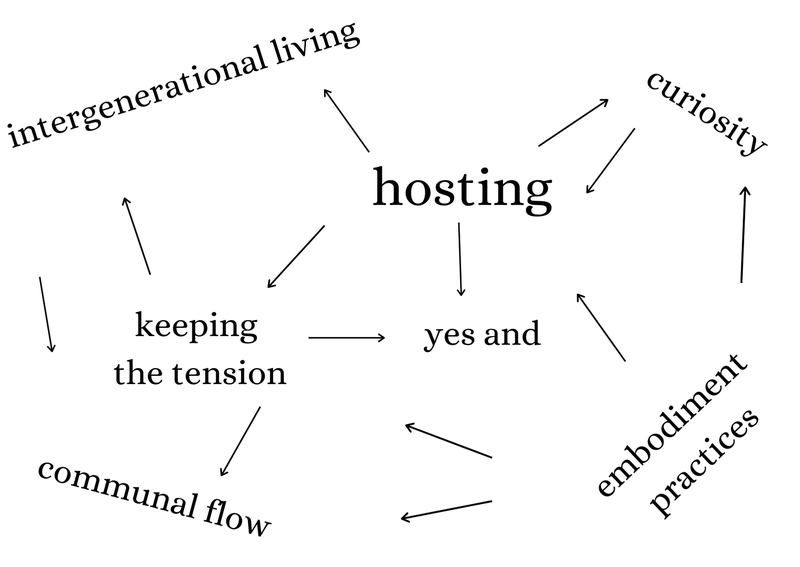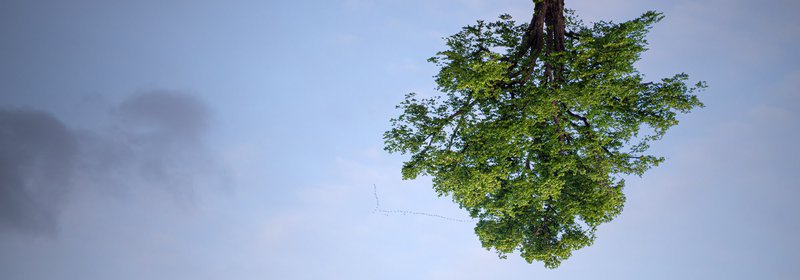Some practices for uncertainty
Posted June 26, 2020 by Greta Muscat AzzopardiThe past two months of global pandemic have been pretty unusual, to say the least. I find myself in a country I did not really intend to stay in for so long thanks to a quick decision to stay in Germany when faced with imminent border closure at home in Malta. I have experienced restrictions to my daily movement that my 95-year-old grandmother described as 'much worse than what we had during World War II in Malta'. Global sense making seems to be in a darker cloud than the one it is usually in as fear exposes crumbling trust in the benevolence of systems and institutions that we have so far relied on to figure out what is true.
The level of uncertainty has spiked significantly, which even for someone who has intentionally befriended it for the past seven years or so, has often felt disorienting. This background has created an ideal setting for me to better understand the practices that contribute to my overall well being in the midst of high levels of uncertainty.

Hosting
Having conversations in spaces that feel safe and welcoming to my whole self have been crucial for me to start to make my own sense of the situations I find myself in. Whether online or in-person, being in well-hosted gatherings encourages me to tap into my own inner interpretations and to speak them out in the presence of a warm community. Just the act of vocalising these ideas tends to test their authenticity, helping me to sift between the sense and nonsense, eventually getting closer and closer to what feels real and truthful to me. The act of witnessing others do the same also adds to my courage and lends perspectives I might have completely missed out on. I have greatly appreciated the weekly online gatherings that have been organised through the Art of Hosting community. As a self-organised movement, the gatherings were initiated by one person but hosted by a different group each session, creating a lot of opportunity for shared sense-making and peer learning at a level that is not usually accessible due to the complications of physical (dis)locations. Hosting has also helped greatly in creating more harmony at home. Taking a few moments to host my own self (sometimes that means drinking some water or thinking about the space and time for a particular conversation, sitting in circle and making sure even the meekest voices get to be heard are simple hosting practices that have made big differences in family and relationship dynamics during tense and disorienting days when things could have easily gotten out of hand.
Endless Curiosity
This is a practice that my one-year-old son constantly models. Being at a stage where most things in life are new and unknown, he engages with everything as if it is exciting and worthwhile of the utmost attention. Sounds of flies buzzing against windows are a reason to pause, seek them out and point, lines of ants are an invitation to bend low and watch the procession, along with others if possible. Objects are checked carefully for moving parts or potential for dismantling, food is explored for smell, texture and adaptability for table-top art-making aside from eating. Toppling over means a whole new and interesting perspective to view the world from.
Identifying with curiosity rather than fear opens up capacities for friendliness with the unknown, crucial for these times when the unknown is expanding exponentially and eating up all the orderly-stacked known in the process.
Going with the (intergenerational) communal flow
I really feel that since I became a parent, time has shifted from this resource that I could allocate mostly independently to a communal pool of possibility which I negotiate with those who share the tasks of caring.
Thanks to Corona-induced border closures, I found myself living in an intergenerational household made up of a couple in their 70s, a couple in their 30s and one bouncy one year old. Back home, I'm used to living in a multi-adult household, however we are more or less of a similar age-group in which work takes centre stage. Since the different generations are at varying life stages, new dynamics could emerge. While at home the urge to work seems to take over most household members' day, there is now more flexibility over when things must be done, leading to new rhythms and flows. All of a sudden, two additional adults are actually interested in hanging out with my son, creating all kinds of possibilities.
Even with this added support, however, I really find that getting anything done depends more on a subtle communal flow than on anything I feel I can control individually, let alone plan rigidly for. For months I blamed my own lack of discipline, my laziness and my lack of confidence in my own abilities, for a lack of tangible outcomes. Through observation however, I eventually realised that reality was more akin to a dance with many participants. Some tasks find perfect harmony with the overall choreography and flow effortlessly, others cannot even go beyond the starting line.
Rather than get frustrated about things that cannot seem to get off the ground, I have accepted this communal flow as a filter for what actually gets done. I choose to focus less on me as an individual and more on me as a participant in this group-dance that comes together through a mix of mutual support, serendipity, encouragement and ideas that simply refuse to go away.
Finding the yes and building on it
This is a principle for communication which I find especially helpful in times when conflict is brewing. It makes it possible to work harmoniously with my partner rather than getting lost in needless arguments over irrelevant details (some would call both of us hard headed). It also helps me when having conversations about eggshell subjects such as vaccinations, border closure, lockdowns etc where my first instinct is to contradict using capital letters.
I could describe this is as a combination of the improvisation practice of "Yes And" where you accept the premise put forward and choose to build on it, with Aikido where one follows "The Way of Harmony of the Spirit". In practical terms, this involves consciously identifying which part of an argument put forward by someone else feels true to me and adding my own, relevant reflections to it. Often this includes asking questions and making attempts to delve deeper rather than accepting my initial interpretation of what is said. Holding the belief that common ground can always be found if I am patient enough, helps me to move beyond my initial assumptions that are often judgemental and sometimes downright adversarial, depending on my own state of mind.
Identifying what is in common helps to foster a feeling of mutual understanding as well as directing energy towards building rather than dismantling. In times when, at first glance, an argument feels downright preposterous and initiates in me anger and frustration that make it very difficult for me to find any kind of "yes" whatsoever, I rely on other practices to create the space I need.
Keeping the tension
One simple practice that really helps in times of discomfort, is to hold the tension for a little bit longer. A friend gave me this very helpful image (passed on to him by his drama teacher) of a line held tense. Choosing to keep the cord tense rather than go with the impulse to cut it, loosen it or let it go and run, creates space for all kinds of new possibilities to emerge. Often this feels extremely uncomfortable but yields results that encourage me to repeat the practice. Long, deep breaths into my abdomen and sometimes putting my hands on my collar and solar plexus, help.

Berlin sky with Tallinn tree by Niels Plotard.
Embodiment practices
During these weeks of sheltering in my not-usual home, I have tested out some embodiment practices that Cocky designed to see what effect, if any, they have on my general state of being. My absolute favourite has been hanging out with trees. From young trees at the park to giant trees spread out next to the river, to tall, tall, trees of the forest, I consciously and physically connected with trees whenever I got the chance to over the past two months or so. Whatever the kind of tree, I very quickly sink into a beautiful feeling of connection with everything, similar to the feeling I get while meditating, just much quicker. Trees take me to a genuine sense of wellbeing that rings throughout my whole body.
Another extremely effective practice is looking at the world upside down (lying on a big swing with my head dangling is my most favourite way to do this). Perhaps it has something to do with the change in perspective and how magical everything and everyone looks rooted to the top and hanging down into nothingness. Spending a good 10 or 20 minutes with this perspective tends to transport me to a mindset that is geared to notice the beautiful, the magical, the tiny and the usually missed. Trees are particularly whimsical when seen tapering into the nothingness of the sky.
Created: 15 Jul 2021 / Updated: 15 Jul 2021




